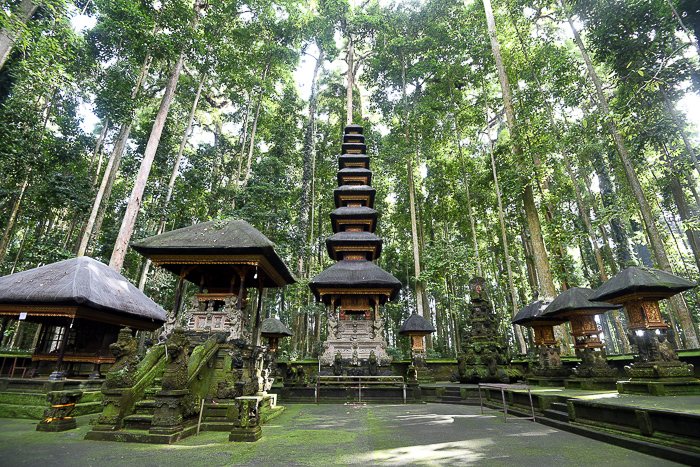Temple of the Hill Spirit – Indonesia, Bali

Temple of the Hill Spirit - Indonesia, Bali
Pura Bukit Sari, “Temple of the Hill Spirit” is a secluded temple in the nutmeg forests surrounding Sangeh, part of the former kingdom of Mengwi. It was established in the 17th century by the Mengwi rulers, but it is now the haunt of large crab-Eating Macaques who call the temple their own.
There are several theories regarding the origin of the temple. In one, the temple was built by Anak Agung Anglurah Made Karangasem Sakti, the adopted son of the first Mengwi ruler, Cokorda Sakti Blambangan.
While engaged in deep meditation, he was inspired to build the temple as a testament to the gods of Mount Agung.
Another legend asserts that the forest came into being in ancient times when Hanuman, the monkey king and general under Rama in the Ramayana, attempted to kill Rawana, the arch-nemesis or Rama.
Hanuman used supernatural abilities to gather up vast chunks of Mount Meru, the sacred mountain and axis mundi, and slammed them together in an attempt to squish Rawana. In the process, fragments of the mountain–with trees and monkeys clinging to it–fell to earth. These formed the basis of the forest and macaque population seen today.
Today, the temple precinct is divided into three main courtyards with the jeroan, or inner courtyard, at the north end of the site. The southernmost courtyard begins with a candi bentar (split gate).
It continues along an axis lined with twelve statues (six on each side) and two open-air pavilions for temple ceremonies.
At the end of the courtyard is a wall flanked by two bale kukul towers—one on each corner—which were traditionally used to call the community to assemble (however, given the site’s remoteness, they are likely ornamental).
A second split gate, between the two towers, leads to the middle courtyard.
The precinct is shielded from demons using a barrier known as an aling-aling, which stymies demons as they are thought only to be able to travel in straight lines.
Atop the aling-aling is a large moss-covered Garuda statue.
Within the inner courtyard, accessed by a kori agung gate, lies the most sacred area of the temple. At its head is a solitary nine-tiered meru tower, which elegantly complements a living backdrop of tall, narrow nutmeg pines.
Other structures alongside it include a padmasana shrine, to the meru’s right, and a peppelik (or panuman) pavilion to the left, which is intended as a seat for the gods.

